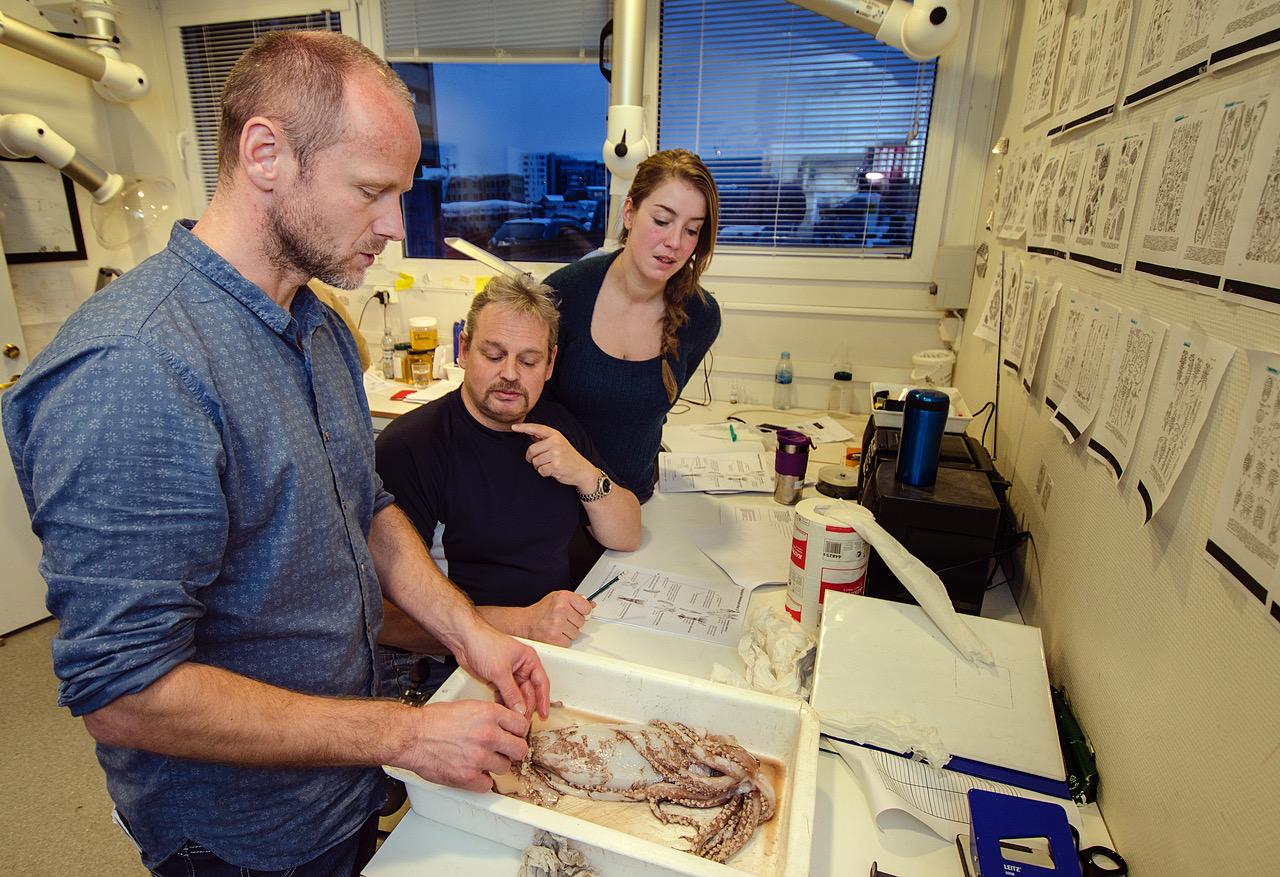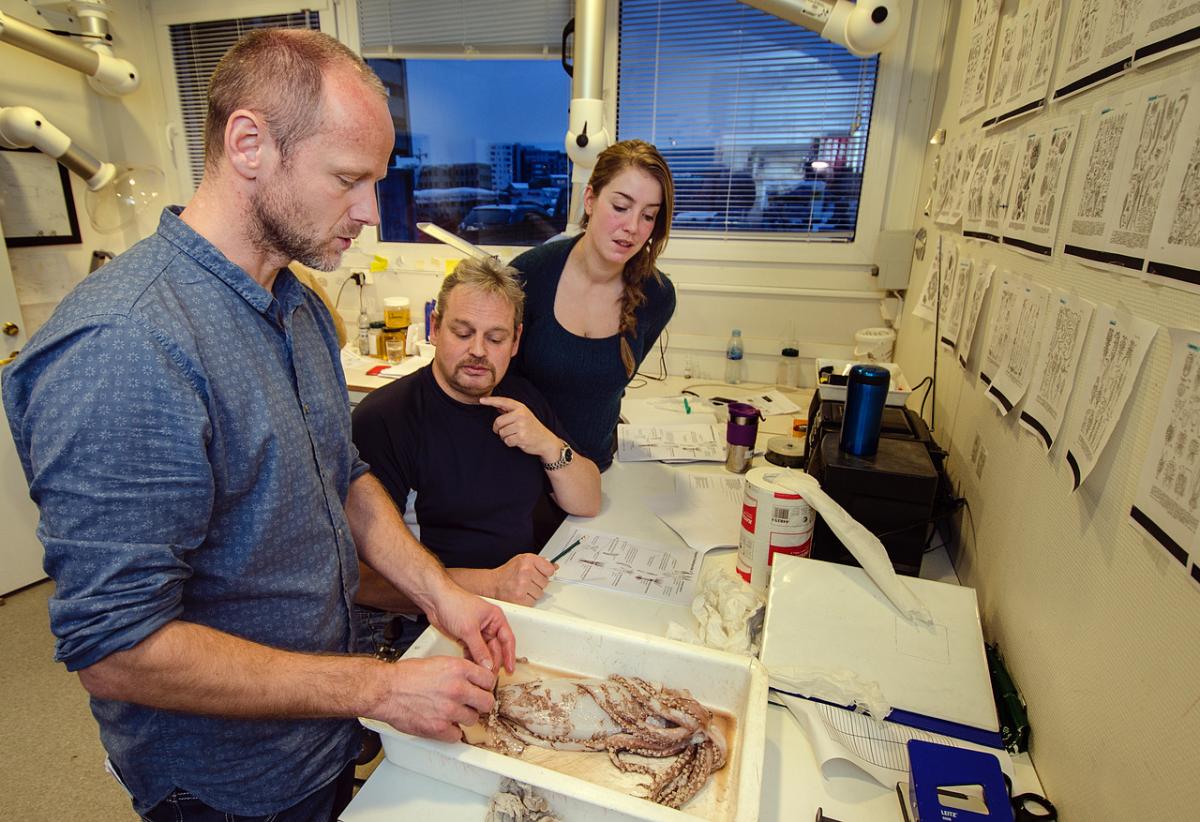Complexity and structure of food webs in the Barents Sea
Submitted by editor on 19 April 2017. Get the paper!
Get the paper!A food web describes the diversity of species and their feeding relationships, i.e. "who eats whom". Food webs are essential parts of ecology as they summarize who is present in an ecosystem and how species interact with one another, here as consumer and prey. It may appear simple to list all species and their trophic interactions but the large diversity in nature makes it impossible to construct complete food webs. In practice, we group species together to build fictional "representative" species that somewhat summarize the peculiarities of whom they represent. One may ask: "How do you elect these representatives?", "Which individualities should they have?", "Will the food web stay the same?" Answering those questions turns out to be complex when species are only partly similar to one another.

The principal way to identify trophic relationships is to perform stomach content analysis which is then supplemented by an extensive literature review.
One illustrative example: a room contains a mouse, a cat, an antelope, a hungry lion, a dog and a wolf. The cat and the lion on one hand, the dog and the wolf on the other hand, are to a certain extent related. But also keep in mind for later in this story that dogs do not like cats. Based on their relatedness (i.e. the taxonomy), we could group the cat and the lion; and the dog and the wolf. On the contrary, the mouse and the antelope don't get along very well. Nonetheless, the later might share more than it would first appear. If the only food available is the grass growing in my backyard, the mouse and the antelope would turn out to be good friends, indeed both are herbivores. While the carnivores (i.e. the cat and the dog, despite their unapparent friendship; the lion and the wolf) might starve, start hunting together and turn their hunger towards a juicy piece of antelope. Based on their diet, the herbivores could be grouped together while carnivores would form a group for themselves. If you are like me, you are getting a little confused: "How do I elect the representatives then?", "Should I select them based on their taxonomic relatedness or on their diet?"
Pierre Olivier
To answer those questions, we used the Barents Sea food web as a case study and grouped species based either on (i) their relatedness, (ii) their similarity in terms of diet; or (iii) their position in the food web. We found that ad hoc choices made during the construction of food webs can significantly alter the representation of how species interact with each other. In this work, we show how different species can be grouped, how this can affect our understanding of food web structure and we provide simple guidance for constructing aggregated food webs while keeping their properties mostly unchanged.